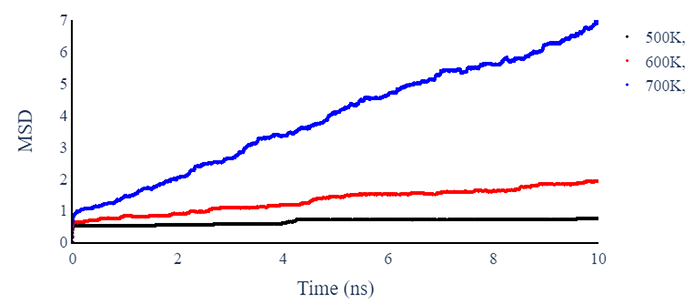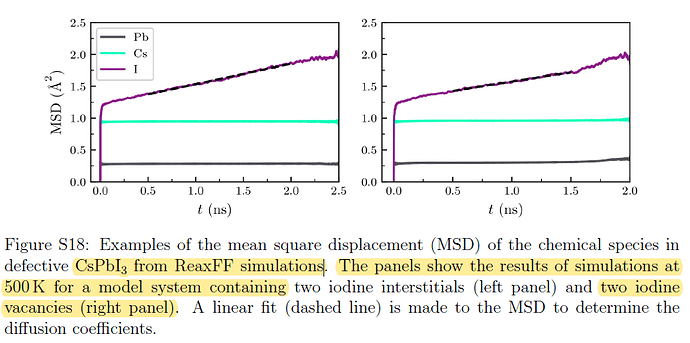Hello,
This is not a question strictly related to LAMMPS but I am open to any inputs. I am using LAMMPS version dated 23 June 2022 to plot the temporal variation of mean squared displacement (MSD) at three temperatures (500, 600, and 700 K) for the iodine ion in an ABI3 crystal (A and B are metal ions). The domain comprises of approximately 1000 atoms with 12 iodine vacancies. The input code is as follows:
Initialization
read_restart
Potential Parameters
pair_style buck/coul/long 12
kspace_style pppm 1e-5
List of Pair Coeffs
Simulation Specifics
timestep 1e-3 # in PICOSECONDS
neigh_modify every 5 delay 0 check yes
restart 500000 restart.perov
group iodine type 2
fix 1 all npt temp 700 700 0.01 aniso 0 0 1
compute m iodine msd com yes average no
fix sq_disp iodine ave/time 200 1 200 c_m[*] file dump.msd
thermo 200
run 10000000
The temporal variation of MSD at the three temperatures is obtained as shown below:
While the MSD at 600K and 700K have a linear temporal variation, the MSD at 500 K shows a stepped variation instead of a smooth linear variation (A magnified image is shown below).
What can be the possible reason for this change in behaviour at lower temperatures? Any suggestions would be helpful. Could it be due to insufficient domain size?
Thanks!


